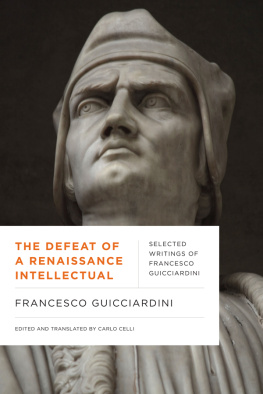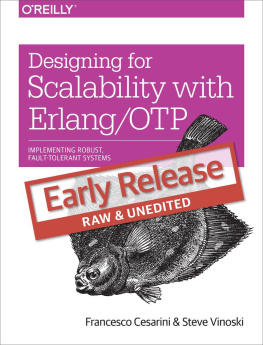Francesco Careri - Walkscapes: Walking As An Aesthetic Practice
Here you can read online Francesco Careri - Walkscapes: Walking As An Aesthetic Practice full text of the book (entire story) in english for free. Download pdf and epub, get meaning, cover and reviews about this ebook. year: 2017, publisher: Culicidae Architectural Press, genre: Romance novel. Description of the work, (preface) as well as reviews are available. Best literature library LitArk.com created for fans of good reading and offers a wide selection of genres:
Romance novel
Science fiction
Adventure
Detective
Science
History
Home and family
Prose
Art
Politics
Computer
Non-fiction
Religion
Business
Children
Humor
Choose a favorite category and find really read worthwhile books. Enjoy immersion in the world of imagination, feel the emotions of the characters or learn something new for yourself, make an fascinating discovery.
- Book:Walkscapes: Walking As An Aesthetic Practice
- Author:
- Publisher:Culicidae Architectural Press
- Genre:
- Year:2017
- Rating:5 / 5
- Favourites:Add to favourites
- Your mark:
- 100
- 1
- 2
- 3
- 4
- 5
Walkscapes: Walking As An Aesthetic Practice: summary, description and annotation
We offer to read an annotation, description, summary or preface (depends on what the author of the book "Walkscapes: Walking As An Aesthetic Practice" wrote himself). If you haven't found the necessary information about the book — write in the comments, we will try to find it.
Walkscapes: Walking As An Aesthetic Practice — read online for free the complete book (whole text) full work
Below is the text of the book, divided by pages. System saving the place of the last page read, allows you to conveniently read the book "Walkscapes: Walking As An Aesthetic Practice" online for free, without having to search again every time where you left off. Put a bookmark, and you can go to the page where you finished reading at any time.
Font size:
Interval:
Bookmark:
Walkscapes
Walking As An Aesthetic Practice
Francesco Careri
Culicidae Architectural Press
an imprint of Culicidae Press, LLC
922 5TH ST
Ames, IA 50010
USA
www.culicidaepress.com
editor@culicidaepress.com
+1 (352) 388-3848
+1 (515) 462-0278
WALKSCAPES: WALKING AS AN AESTHETIC PRACTICE
Published originally by Editorial Gustavo Gili, Barcelona, 2002
Francesco Careri / Editorial Gustavo Gili, SL, Barcelona, 200
And for the current edition,
Culicidae Press, Ames, IA, 2017
Introduction: Gilles Tiberghien
English translation: Steven Piccolo
Foreword: Christopher Flynn
Interior and cover design: polytekton
All rights reserved. No part of this work covered by the copyright hereon may be reproduced or used in any form or by any meansgraphic, electronic, or mechanical, including photocopying, recording, taping, or information storage and retrieval systemswithout written permission of the publisher. The publisher makes no representation, express or implied, with regard of the accuracy of the information contained in this book and cannot accept any legal responsibility or liability for any errors or omissions that may be made.
to Zonzo, with affection
by Christopher Flynn
(2002) by Gilles A. Tiberghien
Christopher Flynn
(2017)
The planners who designed the roads flowing south from Calais never imagined pedestrians. The pebbled pavement is gravel and sand strewn, and sidewalks make only occasional appearances. The houses and businesses one passes are not designed for the eye of the passerby. When William Wordsworth walked from the northern tip of France to the Alps in 1790 on the eve of the first anniversary of the fall of the Bastille, he first found himself in a mean city, where he saw How bright a face is worn when joy of one / Is joy for tens of millions. From there he headed south for the Alps:
direct through hamlets, towns,
Gaudy with reliques of that festival,
Flowers left to wither on triumphal arcs,
And window-garlands. On the public roads,
And, once, three days successively, through paths
By which our toilsome journey was abridged,
Among sequestered villages we walked
And found benevolence and blessedness
Spread like a fragrance everywhere, when spring
Hath left no corner of the land untouched
A summer ago I went looking for roads through the countryside Wordsworth hurried across on his way to gaze at Mont Blanc. I had not read Francesco Careris Walkscapes yet.
But after coming across it right after that journey, which involved a lot of imitation and repetition, it became clear to me that it spoke directly to that act of walking across the sad streets south of that mean city just across the channel from Dover. Careri traces a genealogy of walking across the twentieth century here, but the aggregate does more than that. This is a smart book, and more importantly, a useful one for those interested in what it means to walk through the banal cityscapes and suburbs of a world whose relationship to urbanism is once more in the midst of radical change. My walk from Calais to the Alps was intended as a re-creation for a documentary film project, but after reading Walkscapes I realized, or rather decided, it was its own errance, as much an architectural act as a pilgrimage. In other works, this book changed my mind, giving me a richer way of seeing an experience already filled with interesting complications.
Near the end of Walkscapes , Careri throws out the names of a few cities the Stalker Group has walked in acts he and they call transurbance. Losing itself amidst urban amnesias Stalker has encountered those spaces Dada defined as banal and those places the Surrealists defined as the unconscious of the city. Careri focuses on Robert Smithsons walks across an area most would consider an anti-landscape aggressively projecting an anti-aesthetic, the crumbling outskirts of Passaic, N.J., in the 1960s. For me, the focus on Smithson, a Minimalist artist, and his work in the late 1960s, spins a thread in the web of connections that make up Walkscapes and its explorations into walking as art that brings Wordsworth and the group of walkers he inspired into the same conversation. My failed attempt to follow in Wordsworths footstepsthe roads arent the same, and even if some of them are, theyre paved, and run along canals dug long after the poet made his walk, across a landscape that has been radically changed and changed againbrought me to a landscape that reminded me of the New Jersey where I grew up, and the Passaic that figures prominently in Careris account of those whose footsteps he identifies as antecedents.
So when I call this book useful, I mean that it has helped me tease out some of the things I have been trying to think about walks I have been making that connect my suburban New Jersey boyhood to my intentional failures to repeat the walks British Romantic poets made in the late eighteenth and early nineteenth centuries. At a time when cities all over the world have been re-urbanizing after having emptied out in the last decades in the twentieth century, this book and its focus on how we encounter the cityscape cover similar ground to that touched by Kierkegaard in Repetition (1843), a book about the impossibility of recreating any experience. Kierkegaard has a perfect night at the theater, watching the play, sitting in a box with a view of other spectators who form a tableau that strikes him as perfect. The next night he returns, but the play is not exactly the same, the people in the boxes around him do not arouse the same interest, and from this he develops the idea that experiences are unique, no matter how one tries to recreate them. I knew this with the walks I took throughout Europe, so failure was built into my expectations. Careris focus here on Smithson and his experiments in Passaic, a town where I worked for a newspaper and lived, and his own recursive walks across European cities that have been walked by previous artists, brought about a set of connections in my mind that made sense of it all. Not a communicable kind of sense, but one that somehow put Passaic, Calais, Wordsworth, Kierkegaard and the idea of the Walkscape into a functional harmony.
Errare humanum est , Careri reminds us, going back to an early history of walkers as architects, to nomads in story and reality. To err means to wander, and to wander is to leave the path, and before long, to go wrong. Like many writers who have tackled the concept of nomadism throughout time, Careri recounts the tale of Cain and Abel, but in this book he brings out the complications of Cains story. The first murderer may have been the first nomad, but before that, he was the first farmer, and his brother was the first shepherd. The move from pastoral life to nomadic travel initiates the kinds of moves this book examines throughout the twentieth century. Nomads in the strictest sense arent aimless. They bring cattle to market, goods to a place of trading, families to food and water. In this sense of the term, to err is human because to wander is often necessary for humanity. Careri doesnt let the reader forget that not only are the wanderings of Cain human, but Cains work at building the first city, Enoch, was also a natural impulse, and the acts of modern wanderers who carve constantly disappearing paths through cities are both natural and an art form.
Francesco Careri (2017)
Compared with the first edition of this book there have not been any substantive changes. My text and the introduction by Gilles Tiberghien remain in the original translation made by Steven Piccolo. However, this latest version has been expanded and upgraded in the notes and the bibliography sections. It begins with the new foreword by Christopher Flynn, my epilogue for the second Spanish edition, and it ends with the Stalker Manifesto written by Lorenzo Romito as a tribute to Stalker from Walkscapes . I want to thank Mikesch Muecke for republishing it with Culicidade Press.
Font size:
Interval:
Bookmark:
Similar books «Walkscapes: Walking As An Aesthetic Practice»
Look at similar books to Walkscapes: Walking As An Aesthetic Practice. We have selected literature similar in name and meaning in the hope of providing readers with more options to find new, interesting, not yet read works.
Discussion, reviews of the book Walkscapes: Walking As An Aesthetic Practice and just readers' own opinions. Leave your comments, write what you think about the work, its meaning or the main characters. Specify what exactly you liked and what you didn't like, and why you think so.












